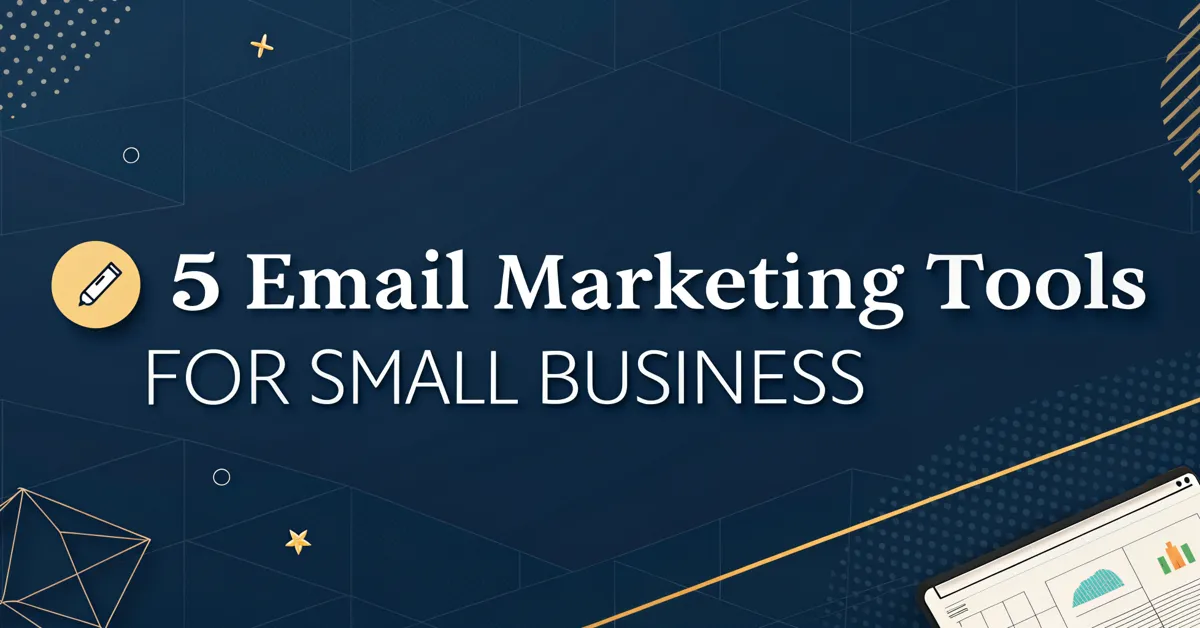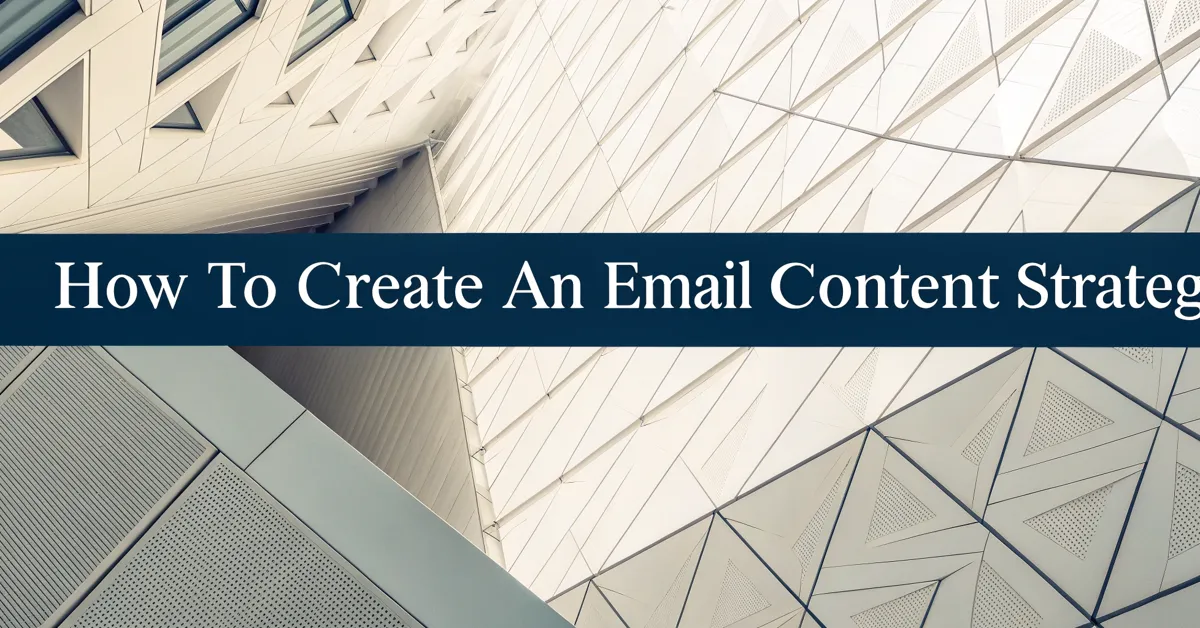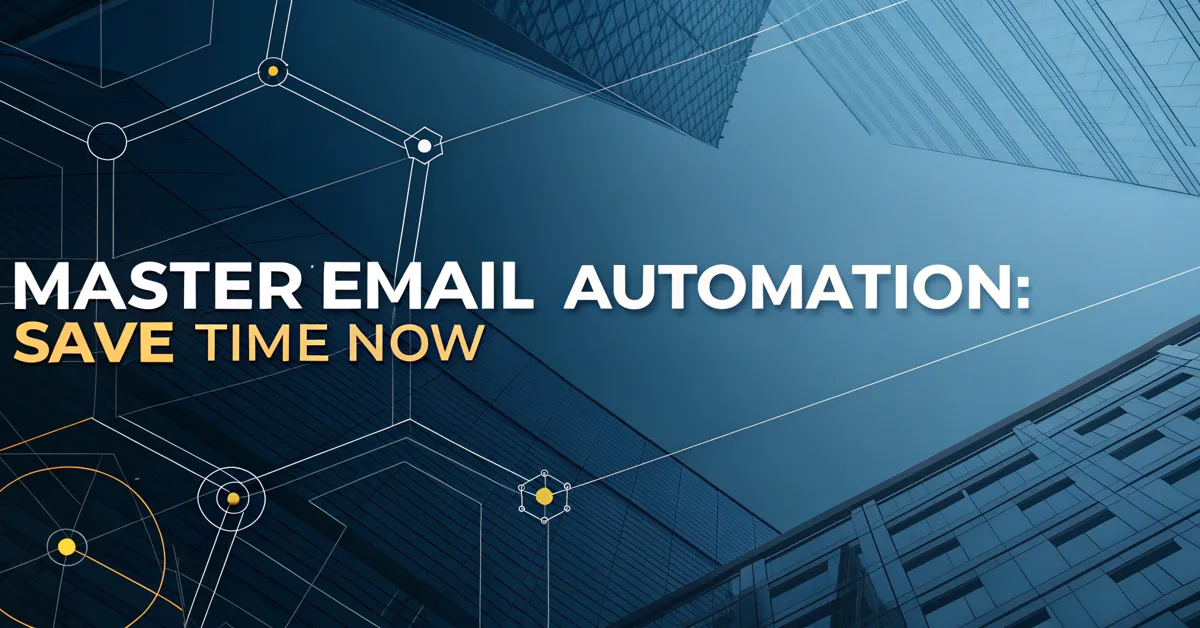Trying to make your small business grow can feel like a never-ending task. You work hard, and you want to see results, but often the tools you need come with high price tags. Email marketing should not be one of those things. With the right approach, email can be a powerful tool, not a costly burden. You might be wondering, “How can I, as a small business owner, get the reach of the big guys without spending a fortune?” The good news is, there are ways.
This article will walk you through some very helpful options. These tools are designed with small businesses in mind. They are easy to use and they don’t cost a lot of money. We’ll explore five email marketing tools that can help you connect with your customers, build relationships, and see real growth. Let’s get started.
Email Marketing: A Must-Have for Small Businesses
Email marketing is more than just sending out messages. It’s about creating a path to your customers, speaking directly to their needs, and building loyalty. You may ask why email still matters when social media seems to take over everything? The answer lies in the directness and control email gives you. Social platforms come and go, but an email address is a direct line to your customer.
Think of it like this: with social media, you are renting space on someone else’s property. Your posts may only reach a small fraction of your followers. But with email, you are communicating directly with your audience. When used with care and planning, email can boost sales, build trust, and make your business more visible. Here’s why it should be a key piece of your strategy:
- Direct Communication: Emails land right in your customers’ inboxes. Unlike social media, they do not depend on algorithms. This way, your message will always reach your audience.
- Cost-Effective: Email marketing offers one of the best ROIs. The cost to reach each customer is much lower than with other methods.
- Targeted Messaging: You can segment your audience and send emails that speak directly to their interests. This improves your results.
- Personalization: Email lets you add a human touch with personalized messages. This builds stronger ties with your customers.
- Measurable Results: With email, it’s easy to see how well your campaign does. You can track opens, clicks, and conversions. This will help you improve.
Let’s dive in to see how each tool helps a business like yours get these results.
5 Email Marketing Tools You Should Check Out
There are so many email marketing tools out there, and it can be hard to pick the right one. To help you avoid wasting time and money, here are five options to consider:
- MailerLite
- Sendinblue
- Moosend
- Mailchimp
- ConvertKit
These tools were chosen for their ease of use, low cost, and features useful for small businesses. Let’s look at what each of them has to offer.
1. MailerLite
MailerLite has become a favorite among small businesses. It has an easy-to-use interface and lots of features. You can create emails with its drag-and-drop tool, set up automation for sending emails, and track how well your email campaigns are doing. It’s simple to use but still has the power you need.
Key Features:
- Drag-and-Drop Editor: MailerLite’s editor lets you make emails quickly. You can use their templates or make your own.
- Automation: You can automate emails based on user actions. For instance, you can set up a welcome email for new subscribers or a series of emails after purchase. This can save you a lot of time.
- Segmentation: This option lets you divide your audience into groups based on interests, past actions, and other things. This helps you send emails more directly.
- A/B Testing: See which email works best. Test your subject lines, content, and other elements to learn what works best for your audience.
- Landing Pages and Pop-Ups: You can make landing pages and pop-ups to grow your email list. This lets you create a full campaign on just one platform.
Pricing:
MailerLite has a very generous free plan. It lets you have up to 1,000 subscribers and send 12,000 emails per month. This is great for businesses that are just starting out. For more subscribers or advanced options, the paid plans start at only a few dollars per month.
Why It’s Good for Small Businesses:
- Affordable: The free plan and low-cost paid options make it a great fit for small businesses watching their budget.
- Simple to Use: MailerLite’s user interface is very simple, and that’s very helpful for those who may not be tech experts.
- Good Customer Support: MailerLite has lots of tutorials and live chat to help when needed.
2. Sendinblue
Sendinblue is not just for email, it also offers SMS marketing, live chat, and more. This means you can handle many of your marketing tasks on one platform. Its email marketing feature is strong and has a lot of options to design emails, set up automation, and segment your audience.
Key Features:
- Email and SMS Marketing: Use email and SMS marketing tools in one place.
- Marketing Automation: Automate emails based on user actions. Use advanced triggers to send emails that fit each situation.
- CRM Integration: Manage customer data, track interactions, and make campaigns more personal.
- Transactional Emails: Set up emails for receipts, shipping updates, and account changes.
- Advanced Analytics: Detailed reports to track email performance and user behavior.
Pricing:
Sendinblue has a free plan that includes unlimited contacts and up to 300 emails per day. Their paid plans start at a very good price. It goes up as your needs grow.
Why It’s Good for Small Businesses:
- All-in-One Platform: Save time and money with Sendinblue’s broad options.
- Scalable: Grows with your business. From the free plan to the higher paid options, Sendinblue can fit your needs as your business grows.
- Advanced Features: Offers more automation tools that are normally found on more expensive platforms.
3. Moosend
Moosend is known for its user-friendly design and its focus on automation. It offers lots of tools to make it easier for small businesses to automate tasks. You can create targeted emails based on user actions and behavior.
Key Features:
- Automation Tools: Set up workflows that trigger emails based on actions. For instance, follow-ups after sign-up or abandoned cart messages.
- Email Editor: Easily design emails with its simple drag-and-drop builder.
- Personalization: Add personalized details to your emails. This includes name, location, and past purchase, making your content feel less generic.
- Reporting: Check opens, clicks, and conversions to see which strategies do well.
- List Segmentation: Divide your audience into specific groups based on what they are interested in, their location, their actions, or how they engaged in the past.
Pricing:
Moosend has a free plan for small businesses. It allows up to 1,000 subscribers. The paid options are designed with small businesses in mind, offering great value for money.
Why It’s Good for Small Businesses:
- Easy to Use: Simple interface that doesn’t take a lot of time to learn.
- Strong Automation: Excellent tools to make marketing tasks easier and more efficient.
- Affordable: The free plan and low-cost plans let you try the tools without much risk.
4. Mailchimp
Mailchimp is one of the most popular email marketing platforms. It’s known for its easy-to-use tools. You can design emails, manage your contacts, and set up automation. It has a lot of features that help grow your business.
Key Features:
- Drag-and-Drop Email Builder: Design emails fast using its drag-and-drop editor.
- Automation: Set up emails for welcome series, abandoned carts, and other actions.
- Audience Segmentation: Organize your subscribers into groups based on their actions and interests.
- Analytics: Check the success of your email campaigns. See opens, clicks, and conversions.
- Integrations: Connect with other apps like Shopify, WooCommerce, and more.
Pricing:
Mailchimp has a free plan that includes up to 500 contacts. However, it’s limited in options. The paid plans start at a reasonable price, and the price goes up as your subscriber list grows.
Why It’s Good for Small Businesses:
- Well Known Brand: It is a trusted brand in the industry.
- Lots of Integrations: Connect to other useful apps you are already using.
- Easy to Use: The tools are easy to learn, even for first time users.
5. ConvertKit
ConvertKit is made for creators. It is focused on helping users grow their audience with landing pages, email tools, and automation. It’s very useful for content creators, bloggers, and small online businesses.
Key Features:
- Email Marketing: Send out emails, newsletters, and set up automatic emails.
- Landing Pages: Make pages to grow your email list. There are pre-made templates or options to make your own.
- Automation: Create automatic emails based on actions. For instance, welcome emails or after-purchase sequences.
- Segmentation: Separate your audience based on actions, tags, or other traits.
- Visual Automation: Make complex automation workflows in a simple visual editor.
Pricing:
ConvertKit’s free plan includes up to 1,000 subscribers, and there’s an unlimited number of landing pages and emails. The paid options start at a good price, and they scale up as your needs grow.
Why It’s Good for Small Businesses:
- Focus on Creators: Designed for those who make content and need to grow an audience.
- Visual Automation Builder: Create automation workflows with its easy-to-use tool.
- Landing Pages Included: Make landing pages to get more email subscribers.
Choosing the Right Tool for Your Business
Choosing the right tool for your business depends on your specific needs and goals. Here’s a quick guide to help you decide:
- MailerLite: Good for those who need a simple and cost-effective option with a very generous free plan.
- Sendinblue: Excellent if you need a full marketing platform that combines email with other tools like SMS.
- Moosend: Best for businesses that want strong automation options with a simple interface.
- Mailchimp: A good option if you need a popular and reliable platform with lots of integrations.
- ConvertKit: Great for creators and small businesses who need an easy way to make landing pages and email automations.
What to Consider Before Choosing
When making your choice, keep these things in mind:
- Your Budget: Figure out how much you can spend. Check the free plans or the lower-cost plans of each tool.
- Features You Need: Make a list of what you need. Do you need automations, segmentation, landing pages, etc.? Match what you need with what the tool has to offer.
- Ease of Use: You need tools you can use easily without having to take too much time to learn.
- Scalability: Will the tool grow with your business? Can it handle more subscribers and features as your needs grow?
- Support: How can you get help if you need it? Do they have a support team, live chat, or tutorials?
How to Get Started With Email Marketing
Now that you know which tools you can use, it’s time to learn how to start with email marketing. Here are some steps to follow:
1. Build Your Email List
The first thing to do is grow your email list. Here are some options to get you started:
- Add sign-up forms to your website. Place them in very visible spots, such as your header or footer, or even as pop-ups.
- Offer incentives. Give away a free e-book, a discount, or some kind of helpful content to get people to sign up.
- Add a sign-up option to your social media pages. If your social platforms have many followers, make sure you use those to send people to your email list sign-up form.
- Ask in person. If you have a physical store, ask your clients if they want to sign up for emails.
2. Define Your Audience
Knowing your audience will help you make the best emails. It’s important to know who they are, what they like, and what problems they may have. This will help you make emails that they will find useful. To define your audience, try to see these traits in your clients:
- Demographics: How old are they, where do they live, what jobs do they have?
- Interests: What are they interested in? What are their passions and hobbies?
- Problems: What problems do they have that your business can solve?
- Past Actions: What have they bought in the past? What content have they clicked on?
3. Plan Your Content
With your audience defined, you will be able to create a plan for your email content. What messages will you be sending? How will they help your business? Here are some things to consider when making your content plan:
- Welcome Emails: Set up automatic welcome emails to all new subscribers. This will help to start off your relationship.
- Newsletters: Keep your audience up to date with new products, services, or news.
- Promotional Emails: Send out emails with sales, discounts, and special offers.
- Informational Content: Share useful tips, tutorials, and other content that will help your audience.
- Engagement Emails: Ask questions, get feedback, and connect with your audience on a personal level.
4. Design Your Emails
It’s very important to make your emails look professional and easy to read. When making emails, try to follow these tips:
- Use a Simple Design: Keep your emails simple and clean. It will make it easier for your audience to focus on your message.
- Mobile-Friendly: Most people read emails on their phone. Make sure your emails will look good on mobile devices.
- Use Images: Add good-quality images to make your emails more engaging, but make sure they are compressed to avoid slowing down load times.
- Clear Call to Action (CTA): Tell your audience what you want them to do. Use buttons and phrases like “Shop Now,” “Learn More,” or “Sign Up.”
- Brand Consistency: Make sure your emails match your brand. Use the same colors, fonts, and style.
5. Use Automation
Automation can save you time and help you reach your goals. Here are some automation workflows you can set up:
- Welcome Series: Create an email series for new subscribers that introduces them to your brand.
- Abandoned Cart Emails: Send emails to clients who added items to their cart but did not complete the purchase.
- Post-Purchase Emails: Follow up with clients after they buy something. Give them more details about the purchase, or ask for feedback.
- Birthday Emails: Send emails to clients on their birthday with a special offer.
- Re-Engagement Emails: Send emails to clients who have not engaged with your brand recently, and try to get them to become active again.
6. Check Your Results
Keep a very close eye on your email marketing results. This will help you see what is working and what is not. Check these metrics:
- Open Rate: The number of people who opened your email.
- Click-Through Rate (CTR): The number of people who clicked on a link in your email.
- Conversion Rate: The number of people who completed a desired action, like a purchase or sign-up.
- Unsubscribe Rate: The number of people who unsubscribed from your emails.
Use what you learn to improve future campaigns. Always adjust your emails to improve their success.
Why Email Marketing Matters More Than Ever
In today’s digital world, it can be easy to forget the value of email marketing. But for small businesses, email marketing is a simple and effective way to reach your clients directly. It’s about building relationships, keeping your brand in the front of your clients’ minds, and making sure your marketing is working for you.
Email marketing also gives you more control than you would get with social media. Social media algorithms change, and your posts may not reach everyone. With email, however, you know your message goes right to your clients’ inbox. This is why email marketing is a must-have for any small business. If you do not use it already, now is the time to start.
Start Boosting Your Business With the Right Tool
Finding the right email marketing tool for your small business can be a big step. The five tools we looked at are designed to be easy to use, affordable, and filled with features. You now have enough knowledge to pick one that suits your needs. Whether you choose MailerLite for its simple approach, Sendinblue for its many options, Moosend for its automation options, Mailchimp for its proven reputation, or ConvertKit for its focus on creators, you will find value in all.
Take the time to think about what you want to achieve. Explore the free options, and see what each tool can do. Don’t forget to put what you learned into practice, keep trying new things, and adjust your tactics based on your results. With the right email marketing tool, your business will have an easier time to grow, connect with your audience, and reach your goals. So, why wait? Start today and watch your business thrive.





